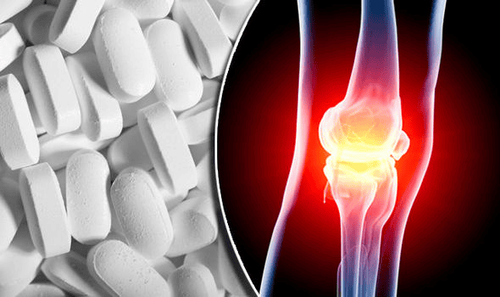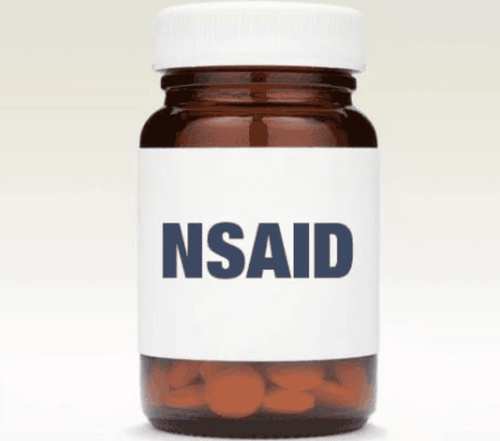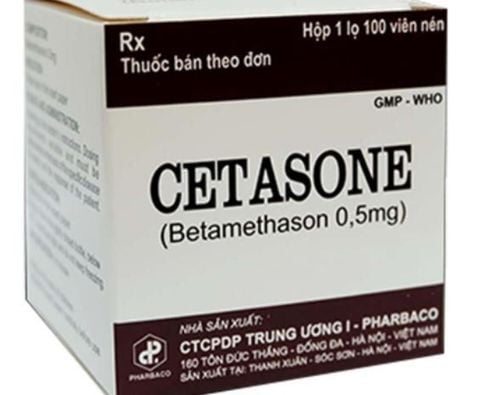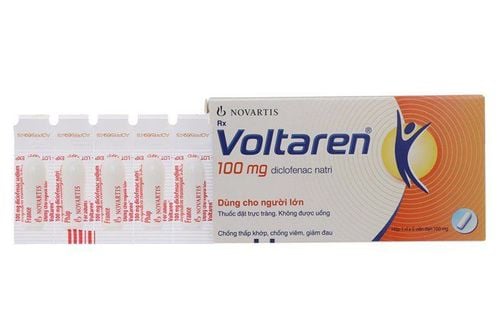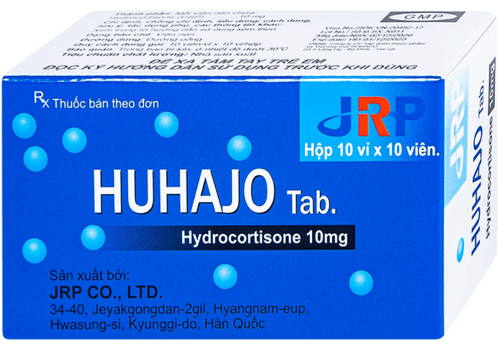This is an automatically translated article.
Intafenac is made in the form of tablets, with the main ingredient being Aceclofenac. The drug is used in the treatment of rheumatism, pain relief in trauma and surgery.
1. Uses of Intafenac
1 Intafenac tablet contains 100mg of Aceclofenac and excipients. Aceclofenac is a non-steroidal anti-inflammatory, antipyretic and analgesic, belonging to the group of phenylacetic derivatives. Aceclofenac has analgesic and anti-inflammatory effects in cases of rheumatoid arthritis, chronic arthritis, ankylosing spondylitis.
Aceclofenac is well absorbed from the gastrointestinal tract. Food slows down the absorption of the drug. Aceclofenac is strongly bound to plasma proteins, the oral bioavailability is about 50%. Aceclofenac is eliminated in the urine.
Indications for the use of Intafenac:
Treatment of rheumatic diseases; Pain relief from trauma and surgery. Contraindications to the use of Intafenac:
People with hypersensitivity to Aceclofenac or other components of the drug; Patients who are taking drugs such as Aspirin, other non-steroidal anti-inflammatory drugs, patients with asthma, angina pectoris, rhinitis, severe urinary tract infection or hypersensitivity to these drugs; Patients with suspected history of peptic or duodenal ulcers, gastric bleeding or bleeding disorders; Patients with severe liver failure, severe heart failure; Patients with moderate and severe renal failure; Pregnant or lactating women, young children.
2. Usage and dosage of Intafenac
Usage: Orally. Intafenac can be taken with food and should be taken with plenty of water.
Dosage:
Adults: Use a maximum dose of 200mg/day, divided into 2 times in the morning and evening, 100mg each time; Elderly: No dosage adjustment is necessary, but caution should be exercised when taking the drug; Children: The safety and effectiveness of Intafenac in children have not been evaluated; Hepatic Impairment: Dosage of Intafenac should be reduced in patients with mild to moderate hepatic impairment. The maximum starting dose is 100mg/day; Patients with renal impairment: Intafenac should not be used in patients with moderate to severe renal impairment. Overdose: There is no evidence of an overdose of Intafenac. Overdose symptoms typically include nausea, vomiting, abdominal pain, drowsiness, dizziness, and headache. If symptoms of overdose occur, the patient should be treated with appropriate measures such as bowel lavage, use of activated charcoal and, if necessary, antacid administration.
3. Intafenac side effects
When using Intafenac, patients may experience some side effects such as:
Common: Abdominal pain, indigestion, nausea, diarrhea, increased liver enzymes; Uncommon: Flatulence, dizziness, constipation, gastritis, vomiting, peptic ulcer, skin pruritus, dermatitis, rash, increased urea, increased serum creatinine; Rare: Headache, facial edema, fatigue, weight gain, allergic reactions, anemia, neutropenia, agranulocytosis, thrombocytopenia, tachycardia, edema, cramps, sensation abnormality, shivering, purpura, peptic ulcer, gastric bleeding, hepatitis, interstitial nephritis, stomatitis, eczema, hyperkalemia, elevated alkaline phosphatase, insomnia, collapse, intraocular pressure abnormal Usually,... When experiencing side effects of Intafenac, the patient should stop taking the drug and immediately notify the doctor for instructions on how to respond and handle it appropriately.
4. Caution when using Intafenac
Before and while taking Intafenac, patients should note:
Aceclofenac should be used with caution in patients taking diuretics or other drugs with a risk of reducing blood flow; Intafenac should be used with caution in the elderly, as these patients often experience more side effects; Risk of gastric bleeding or gastric perforation which may occur in severity without causing symptoms before and during Intafenac administration; Liver function, kidney function and red blood cell count should be checked in patients on long-term treatment with non-steroidal anti-inflammatory drugs, including Intafenac; Intafenac should be used with caution when driving or operating machinery because it can cause side effects such as headache, fatigue; The safety and effectiveness of Intafenac in pregnant and lactating women have not been established. Therefore, the drug should not be used during pregnancy. Breastfeeding mothers should not use the drug, if using the drug, they must stop breastfeeding.
5. Intafenac drug interactions
Drug interactions can increase the side effects of some drugs or affect the effectiveness of their treatment. Some drug interactions of Intafenac include:
Do not combine Aceclofenac (the main ingredient of Intafenac) with aspirin or other non-steroidal anti-inflammatory drugs, because it may increase the risk of serious damage to the stomach - intestines ; An increased risk of gastric bleeding and ulceration is associated with nonsteroidal anti-inflammatory drugs (including Intafenac) when used in combination with corticosteroids, bisphosphonates, clopidogrel and ticlopidine, pentoxifylline and alcohol. ; Non-steroidal anti-inflammatory drugs increase the effect of oral anticoagulants (especially phenylbutazone and azapropazone), increasing the risk of major bleeding; Intafenac and other nonsteroidal anti-inflammatory drugs may increase the central nervous system side effects of quinolones, possibly leading to convulsions; Diflunisal reduces the clearance of Aceclofenac, increases plasma concentrations and may lead to severe bleeding in the gastrointestinal tract; Aceclofenac may increase serum lithium concentrations to toxic levels. If concurrent use is required, the patient should be carefully monitored to detect early signs of lithium toxicity. At the same time, it is necessary to monitor the concentration of Lithium in the blood regularly; Aceclofenac may increase serum digoxin concentrations, prolonging the half-life of digoxin. It is recommended to measure the concentration of digoxin in the blood, reduce the dose of digoxin if these two drugs are used simultaneously; Aceclofenac inhibits the renal tubular elimination of methotrexate, leading to increased methotrexate toxicity; When used concurrently with Aceclofenac, the effectiveness of some antihypertensive drugs such as beta-blockers, ACE inhibitors, diuretics,... is reduced. The risk of nephrotoxicity may be increased when Aceclofenac is combined with ACE inhibitors, tacrolimus, cyclosporin or diuretics; Increased risk of hematologic toxicity when zidovudine is used in combination with non-steroidal anti-inflammatory drugs; Ritonavir may increase plasma concentrations of non-steroidal anti-inflammatory drugs. When using Intafenac, to avoid the risk of drug interactions leading to unpredictable consequences, the patient shares with the doctor the list of drugs he is taking, the diseases he has / is suffering from. At the same time, patients should strictly follow the doctor's instructions during the course of taking the drug, should not arbitrarily change the dose, use, time of use, ... to avoid adverse reactions.
Please dial HOTLINE for more information or register for an appointment HERE. Download MyVinmec app to make appointments faster and to manage your bookings easily.




